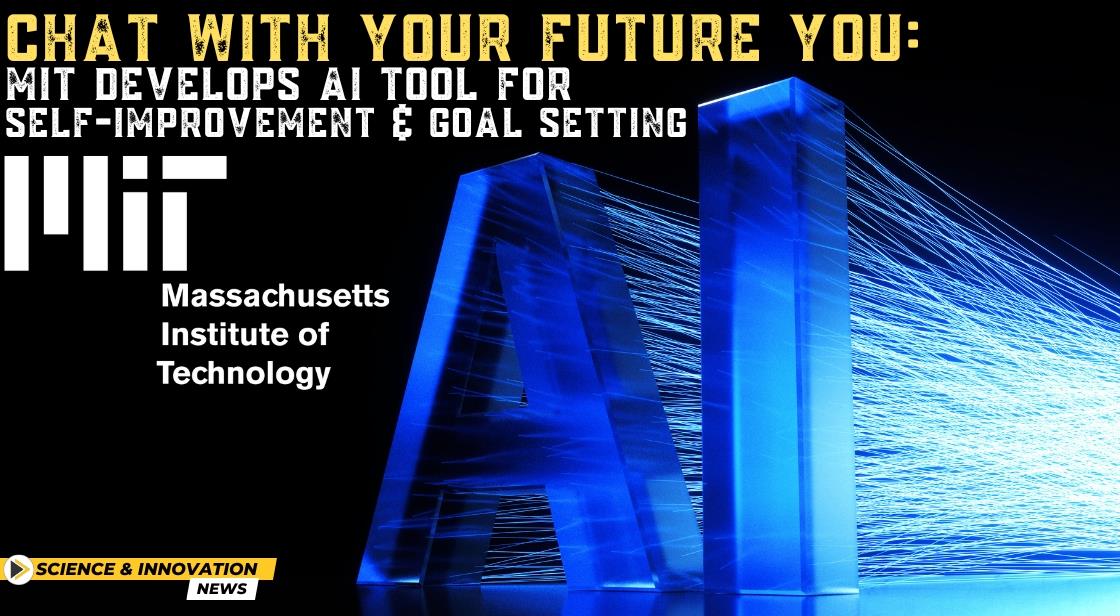Chat with Your Future You: MIT Develops AI Tool for Self-Improvement and Goal Setting

News Synopsis
What if you could gain insights and advice from a wiser, more experienced version of yourself? Long gone are the days when such conversations were relegated to science fiction. Researchers at the Massachusetts Institute of Technology (MIT) have developed a revolutionary AI chatbot that allows users to interact with a simulated version of their future selves.
Delving into the Technology Behind the Chatbot
This innovative chatbot leverages the power of OpenAI's GPT-3.5 model, a state-of-the-art artificial intelligence capable of generating human-like text in response to a wide range of prompts and questions. The process begins with a series of in-depth questions posed to participants about their life experiences, aspirations, and goals.
Building a Synthetic Memory
By analyzing these responses, the AI system constructs a "synthetic memory" or "backstory" for the user's future self. This backstory is not simply a fictional narrative; it's tailored to the user's specific inputs, incorporating their hopes, dreams, and past experiences. This allows the chatbot to engage in conversations that feel surprisingly realistic and personalized.
Example: The Aspiring Teacher
For instance, if a user expressed a desire to become a high school biology teacher, the AI-powered future self might recount a cherished experience not just taking students on a field trip to a local nature preserve, but vividly describe the excitement and curiosity in the students' eyes as they explored the ecosystem, solidifying the user's passion for teaching future generations about the natural world. This personalized touch can significantly enhance the impact of the conversation.
The Science Behind the Benefits: Future Self-Continuity
The MIT team's research is grounded in the concept of "future self-continuity" from behavioral science. This theory posits that individuals who feel a strong connection to their future selves are more likely to make choices that prioritize long-term well-being across various aspects of life, including finances, education, and health.
Bridging the Temporal Gap and Reducing Temporal Discounting
The chatbot, often featuring an altered profile picture showcasing a potential future appearance (e.g., a 60-year-old version), contributes to reducing "temporal discounting." This psychological term refers to the tendency to value immediate rewards over future benefits. By interacting with a digital representation of their older selves, users can begin to bridge the psychological gap between their present and future selves. This newfound sense of connection to their future can lead to more responsible decision-making in the present, as they are more likely to consider the long-term consequences of their choices.
Expert Opinion: Making the Future Feel Tangible
"Interacting with a digitally-aged version of themselves can make the future feel more concrete and immediate," explains Ivo Vlaev, a professor of behavioral science at the University of Warwick. "This can bridge the psychological distance between one's present and future selves, leading to more responsible decision-making." By providing a glimpse into their potential future, the chatbot can act as a powerful motivator, encouraging users to take action towards achieving their long-term goals.
Positive Results from Initial Trials and Potential Applications
The MIT researchers conducted studies with 344 individuals aged 18 to 30. After interacting with their digital older selves, participants reported experiencing reduced anxiety and negative emotions often associated with feelings of unmotivation and uncertainty about the future. The positive results from these initial trials suggest that this AI-powered chatbot has the potential to be a valuable tool for self-improvement and goal setting.
Beyond personal use, this technology could have applications in various fields. For example, career counselors could use the chatbot to help clients envision their future career paths and make informed decisions about their education and training. Financial advisors could leverage the tool to encourage clients to prioritize saving for retirement. The possibilities for utilizing this innovative technology to promote positive change are vast.
Conclusion
The creation of an AI chatbot that allows you to converse with your future self represents a significant leap forward in the application of artificial intelligence and behavioral science. By making the future feel more immediate and tangible, this technology has the potential to positively impact decision-making and emotional well-being.
You May Like









